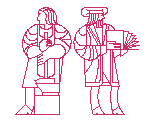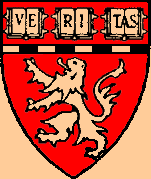



Tutorials
Tutorials will take place in the Student Center. Lunch, which
is provided for tutorial attendees, will be served at noon, on the 3rd floor
of the Student Center, in the Mezzanine Lounge and 20 Chimneys
Room. (there will be signs indicating lunch locations)
General Information:
Tutorial registration will take place at Kresge Auditorium
Lobby, on Saturday, beginning at 7:30AM. There will be continental breakfast food provided
at registration.
Tutorial 1: Virtual Body Models and 3D Anatomy Atlases
Andreas Pommert, Thomas Schiemann, Louis Collins, Alex Zijdenbos
Spatial body models based on tomographic images play an increasingly important role in medical research and education, planning of interventions, and simulation of procedures. This tutorial will present state-of-the-art methods for creating, representing, and exploring these models.
Specific topics that will be discussed include suitable data structures like "intelligent volumes" for integrating volume data and symbolic information. These structures are filled using volume segmentation and knowledge editing techniques. The resulting virtual body models are explored via volume visualization. Simulations can be performed using volume deformation methods or involving inference procedures within semantic networks. Variability of human neuro-anatomy and neuro-pathology is described with 3D probabilistic atlases. Methods for automatic generation of such models from MRI data will be presented.
Methods will be illustrated with various examples from body models based on radiological images as well as the anatomical Visible Human data. Typical applications include simulation of endoscopy and laparoscopy, planning of surgical procedures, authoring of multimedia documents, or interpretation support for PET studies and ultrasound images. The tutorial will include online demos of the scientific software VOXEL-MAN.
Intended audience: This tutorial is of specific interest to biomedical scientists (medical or technical) who are new to the field of virtual body models or are interested in expanding their knowledge in this field.
Tutorial 2: Object Shape
Stephen Pizer, Christopher Taylor, Timothy Cootes
Reference will be made to the work not only of our own groups, but also Mardia & Dryden, Kendall, Bookstein, Grenander, Christensen, Zucker, Gerig, among others. The following outlines the presentation we plan. The presentation will be of mathematics, statistics, and algorithms, supported by illustrative results from medical image analysis and display. The major focus will be on objects in 3D images, such as organs, discrete brain structures, and patterns of structures such as brain gyri and blood vessels.
Tutorial 3: International Workshop on Soft Tissue Deformation and Tissue Palpation
Gabor Szekely and Jim Duncan
These goals can only be achieved through coordinated research and development in a wide range of scientific and engineering disciplines including biomechanics, electrical and mechanical engineering, medical image acquisition, analysis and visualization, and computer science.
The goal of the workshop is to provide an information and discussion
forum by overviewing the current state of the art in the aforementioned
research areas and identifying the major trends and needs of the
coming years. The meeting will be organized as a day-long accompanying
tutorial of the MICCAI'98 conference. Invited lectures will cover
the following major topics:
- Soft tissue biomechanics
- Approximation techniques for soft tissue deformation modeling
- Measurement of elastic tissue behavior
- Medical imaging techniques for elastometry
- Tissue property data bases
- Tissue deformation modeling in surgical simulators
- Modeling and simulation of tissue palpation
- Deformation models for dynamic systems
Programme Committee
N. Ayache, INRIA, Sophia Antipolis
B. Davies, Imperial College, London
S. Delp, Northwestern University
J. Duncan, Yale University, New Haven
S. Gibson, Mitshubishi Electric Research Lab, Boston
R. Howe, Harvard University, Cambridge
E. Keeve, Brigham and Women's Hospital, Boston
D. Metaxas, University of Pennsylvania
R. Robb, Mayo Clinic, Rochester
R. Satava, Yale University, New Haven
G. Szekely, ETH Zurich
R. Taylor, Johns Hopkins University
D. Terzopoulos, University of Toronto
Schedule:
8:30am- 9:50am Session on soft tissue biomechanics and tissue deformation modeling
8:30am- 9:10am A. McCulloch (UCSD): Soft tissue biomechanics
9:10am- 9:50am D. Terzopoulos (Univ. Toronto): Tissue deformation modelling
10:10am-11:30am Session on elastic tissue properties
10:10am-10:50am R. Ehman (Mayo Clinics): MR Elastometry
10:50am-11:30am F. Carter (Univ. Dundee): Biomechanical Testing of Intra-abdominal Soft Tissues
11:30am-12:30pm Round table discussion on tissue deformation modeling
1:30pm- 2:50pm Session on tissue palpation and surgical simulation
1:30pm- 2:10pm R. Howe (Harvard Univ.): Tissue palpation modeling
2:10pm- 2:50pm N. Ayache (INRIA, France): Tissue deformation modelling in surgical simulation
3:20pm- 4:30pm Session on the modelling of dynamic systems
3:20pm- 3:55pm J. Duncan (Yale Univ.): Heart modelling
3:55pm- 4:30pm D. Metaxas (Univ. Pennsylvania): Anatomical/physiological modelling of the cardiopulmonary system
4:30pm- 5:30pm Round table discussion on application aspects and future requirements/trends
Tutorial 4: Medical Image Analysis and Applications
organized by Eric Grimson and Ron Kikinis
Schedule:
9:00 -- 10:20 Computer assisted orthopedic surgery (Tony DiGioia and Lutz Nolte)
10:40 - 12:00 Computing in cardiac imaging (Dimitris Metaxas and Leon Axel)
1:00 -- 2:20 Radiation therapy(Julian Rosenman and Chuck Pelizzari)
2:20 -- 3:40 Image computing in neurologic diseases, especially schizophrenia (Martha Shenton and Guido Gerig)
4:00 -- 5:20 Image guided neurosurgery (Dave Hawkes and Richard Bucholz)